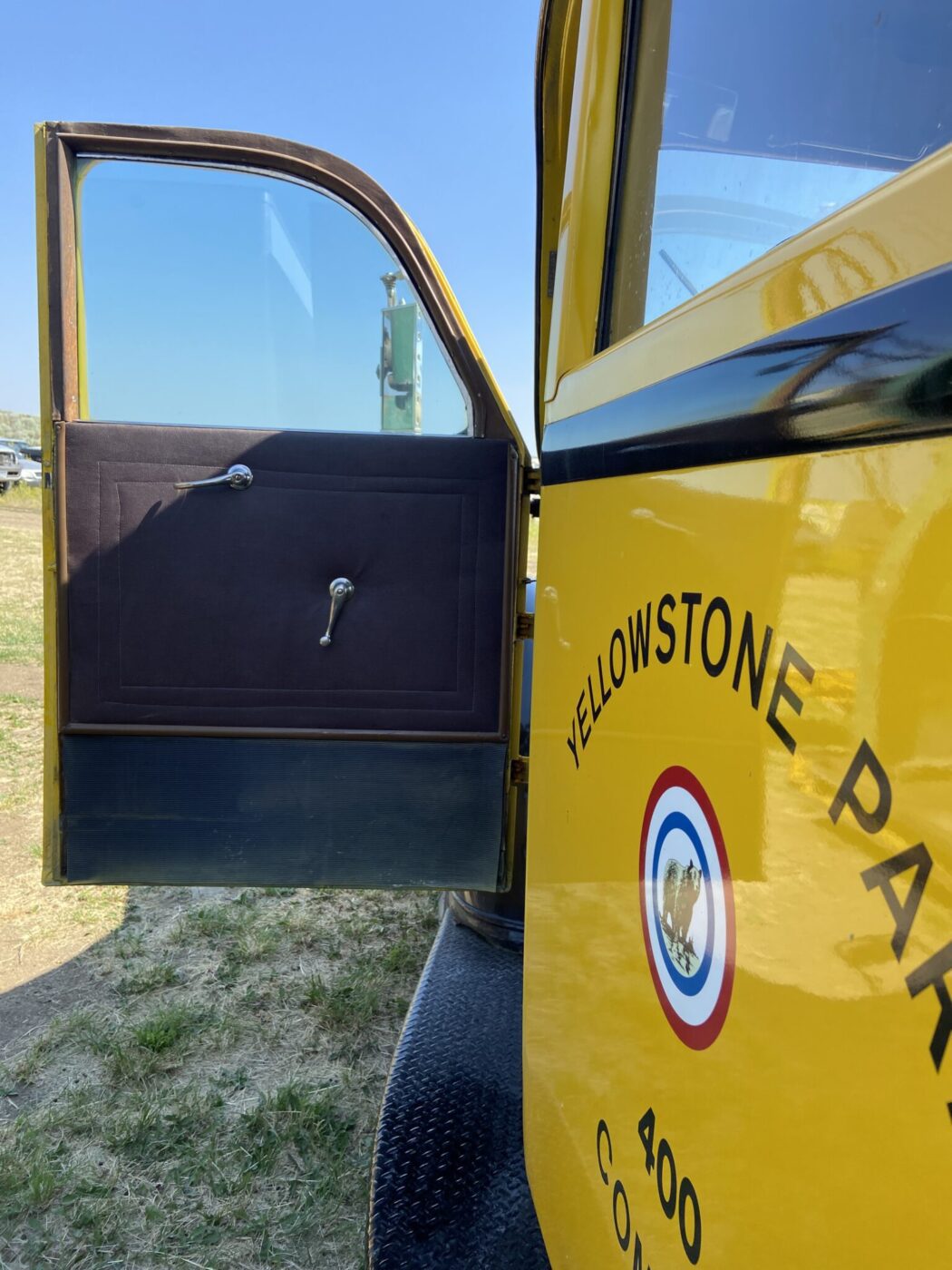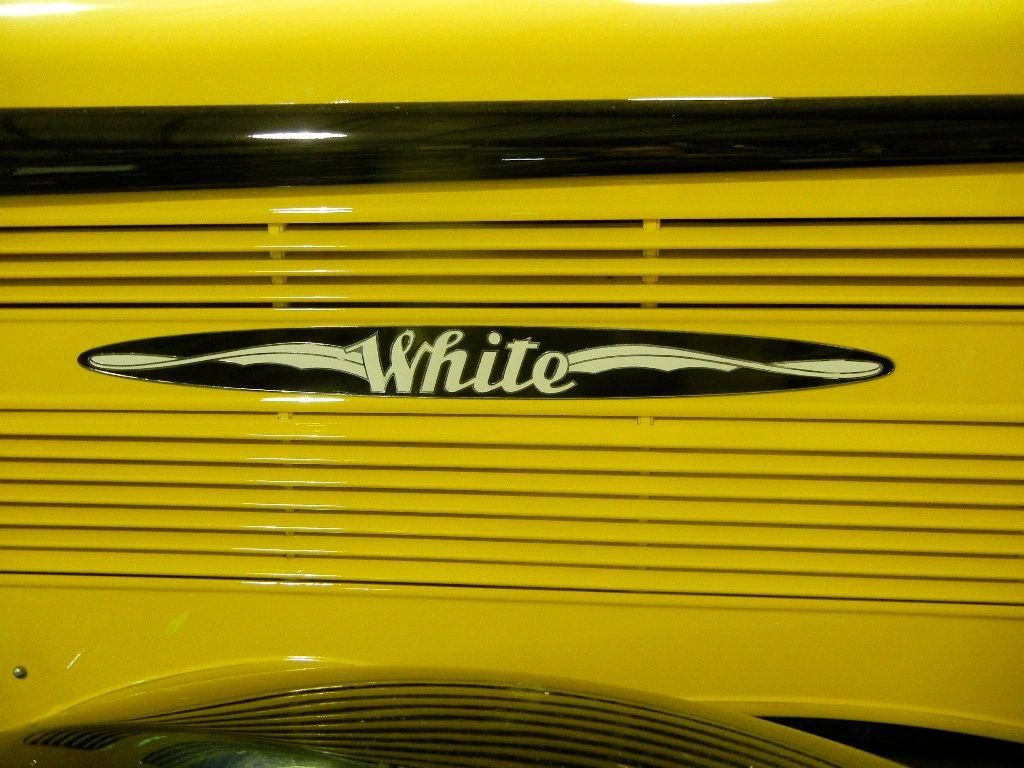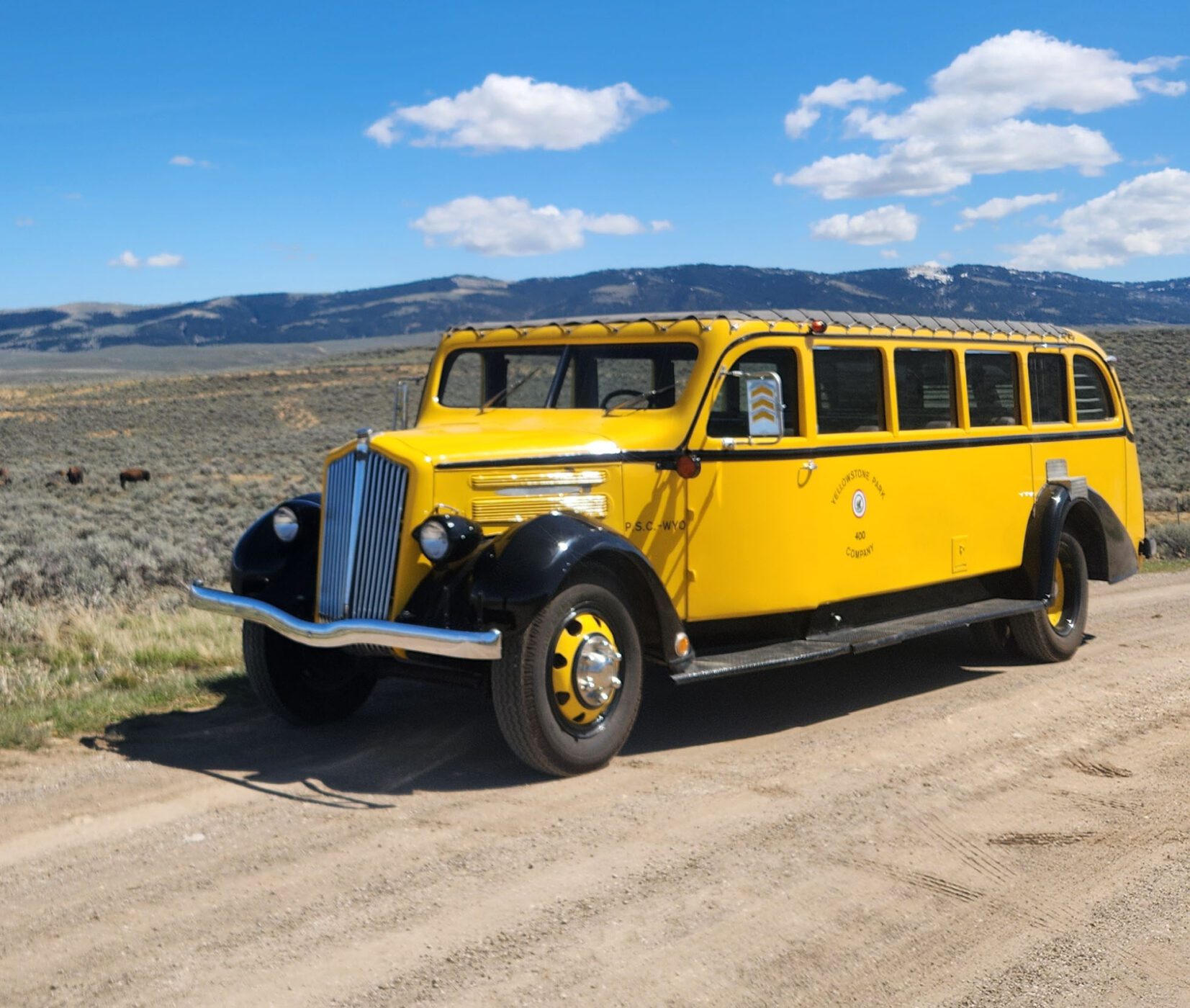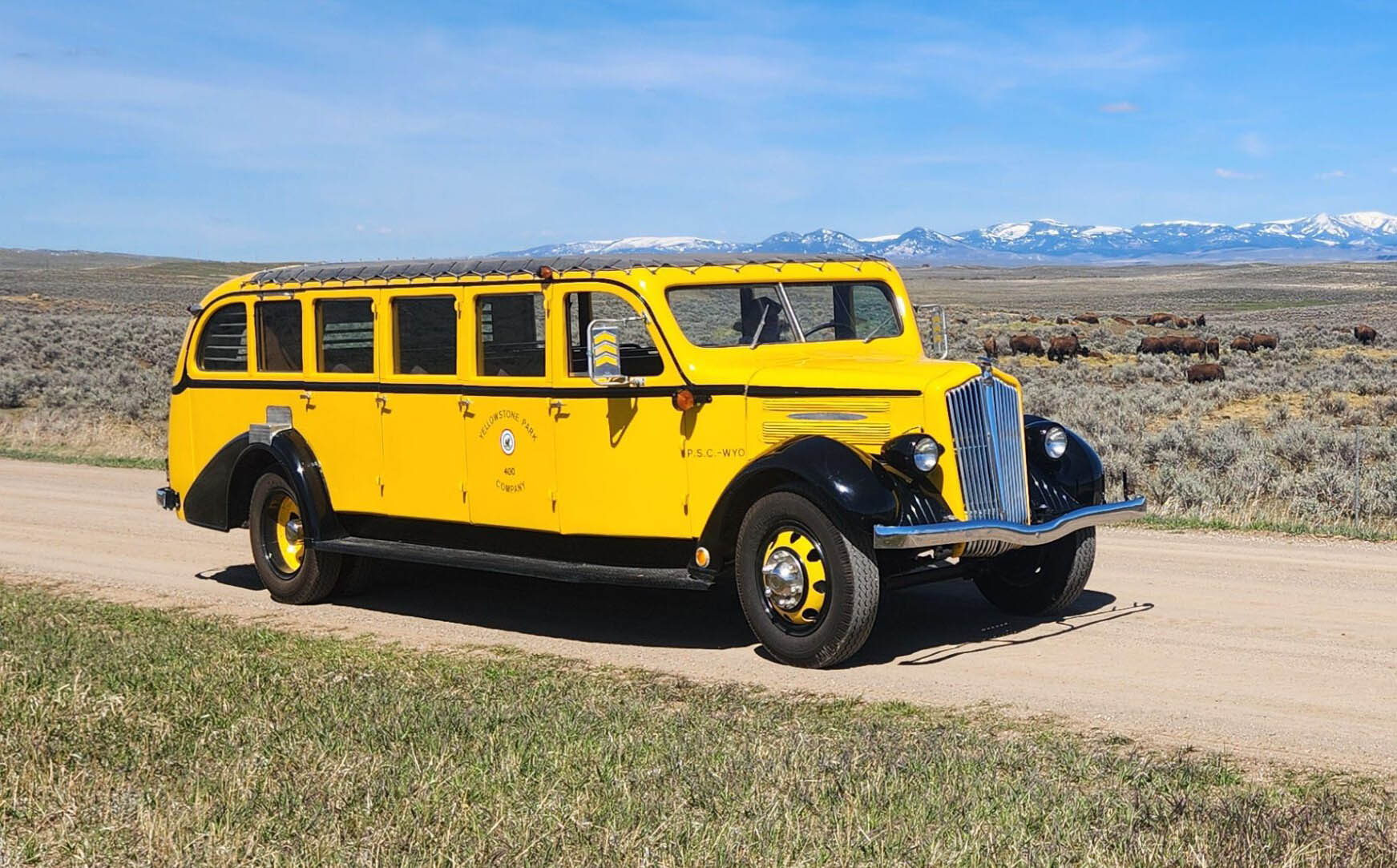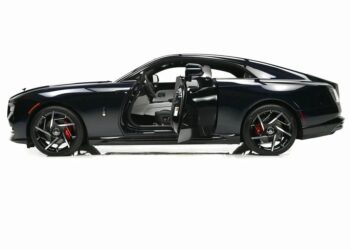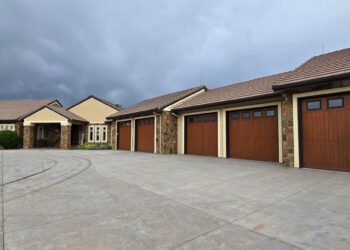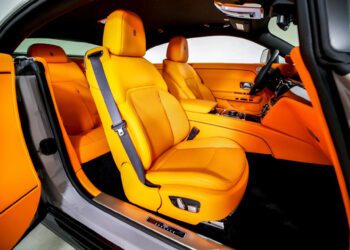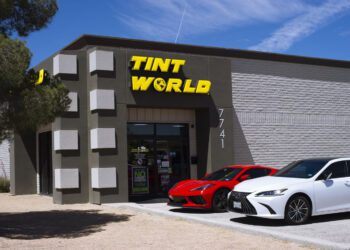In 1935, the U.S. government sought a bus manufacturer capable of building a vehicle suitable for the demanding conditions of national parks. Among the contenders, White Motor Company of Cleveland, Ohio, distinguished itself with its reputation for exceptional build quality and reliability, ultimately securing the contract.
Collaborating with Russian industrial stylist Count Alexis de Sakhnoffsky and Herman Bender of Bender Body Company, White Motor Company created a 14-passenger tour bus that would become an iconic symbol of the era. De Sakhnoffsky’s design, featuring a streamlined grille, complemented Bender’s craftsmanship, which extended from the cowl back. The buses were further characterized by a roll-back canvas top, offering passengers open-air views of the stunning natural landscapes. Between 1936 and 1939, 98 Model 706 buses were delivered to Yellowstone National Park.


These historic vehicles served the park until their retirement in the 1960s, after which many were privately acquired. One such example, a 1937 White Model 706, has recently emerged. Having spent its life sheltered on a Montana ranch, the bus remains in remarkable condition. Its original 318 cubic inch, 16A flathead six-cylinder engine still powers the chassis, and the absence of rust and intact glass are testament to its careful preservation. While the bus has undergone restoration, including repainting, reupholstery, and replacement of the canvas top, its core components remain original.
Built on a 176-inch wheelbase, the White Motor Company Model 706 was engineered for durability and performance. Its 318 cubic inch, 16A flathead six-cylinder engine generated a robust 94 horsepower. This particular 1937 model, once a proud member of the Yellowstone National Park fleet, represents a unique opportunity for collectors, museums, or parade organizers seeking an extraordinary piece of automotive history.
